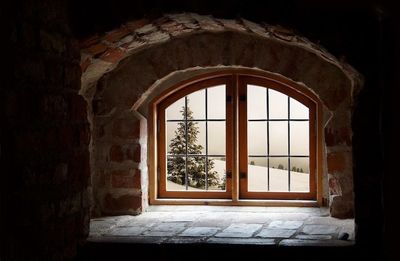There’s nothing better than a cozy fire in the fireplace on a cold night. I’ve always assumed that manufactured fire logs, such as Duraflame, were filled with unhealthy chemicals and not as “natural” as real fire wood.
I was surprised to learn recently that manufactured logs are actually better to burn than real wood.
It’s not that the wood is the problem, it’s the smoke that the wood releases when burned. Wood smoke has many negative health and environmental effects.
Health Concerns
Smoke contains particulate matter, which are microscopic particles that can get into your eyes and respiratory system, causing burning eyes and respiratory problems. This is of particular concern for children, the elderly, and those with asthma or lung disease.
According to the American Lung Association, “Burning wood emits harmful toxins and fine particles in the air that can worsen breathing problems and lead to heart and lung disease and even early death.” (Source)
Environmental Concerns
Wood smoke contains a mixture of gases such as carbon monoxide, as well as particulate matter. This is released into the air and causes a good deal of air pollution, especially during the cooler months, when wood burning is at a high. Some areas in the United States have even implemented regulations on burning wood.
Why Use Manufactured Logs?
Manufactured logs, such as Duraflame, are made out of sawdust and wax. There are even Java Logs, which are made out of recycled coffee grounds. Burning a manufactured log releases less carbon monoxide and particulate matter than burning wood.
Using manufactured firelogs also decreases the number of trees being cut down for firewood.
 Photo by seantoyer
Photo by seantoyerTips for a Better Burn
If Using Real Fire Wood
- Always use dry wood that has been seasoned outside for 6 months prior to burning. Well seasoned wood is dark in color, cracked, and light in weight.
- Don’t burn household garbage or cardboard, or wood with paint or glue on it. All of these things release harmful chemicals when burned.
- Don’t burn wet wood or wood that is rotted, diseased, or moldy.
- Start fires with newspaper or dry kindling.
- Store your wood in a dry, covered area, off the ground to prevent it from getting wet.
- Burn a hot fire. Hot fires release less smoke than smoldering fires.
- Remove ashes to promote good air flow.
Other Options
- Use manufactured logs such as Duraflame or Java Logs. (Make sure to look for logs that are made from recycled sawdust and renewable waxes and oils.)
- Consider replacing your wood burning fireplace with an EPA certified wood burning device, such as a pellet stove. See here for a list.
Resources:
Burn Wise (Partnership program of the EPA.)
whentoburn.com (Input your zip code to find out local burning guidelines.)
Do you enjoy a fire on a cold night? Do you use or have you considered using manufactured logs?


